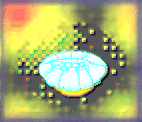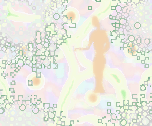|
The origin of Japanese culture and, the world view as its logical conclusion. |
 | ||||
|
It revised the former edition. Hiromasa Noguti. December 19, 2011.
It partly fixed the language of html in July 24, 2016. It fixed the language of html in February 10, 2017. -------------------------------------------------------------------------------------------------- To old edition. |
|||||
|
4-3. The Jomon people's world view. "The myth about birth of Japanese countries" and "the thought of Itak". |
|||||
|
As it stated before, the world the Jomon people think is composed of the spiritual world and this world. And, such two worlds are connected by the words, that is, the conceptualizing of phenomenon. It was because the words are the important means not only for the contact in between the people but also for the contact in between the human being and the gods and goddesses, that is, Mother Nature. Probably, the thought like that and also the special ability of the brain we have were kept because of the special characteristic our language has. But, it seems that unfortunately most of people don't know the thought like that and the way of use of the ability like that. The human being utters the words of something, expecting the reaction of something usually. And, the Jomon people uttered the words toward not only human being but also the nature(the gods and goddesses) with the expectancy like that. The utterance like that to be based on the way to get along with the gods and goddesses(the nature) was the declaration of their expectancy turned to the Mother Nature, and was also the self-confirmation of the manner like that. However, it isn't that the Jomon people decided the above mentioned declaration and way unilaterally. It was decided with the exchanging information between the people and Mother Nature(the gods and goddesses) persistently. And, the way acquired for the behavior in the decision like that became the manners and ceremony to talk with the Nature gradually. It is the contract in between the human being and the Mother Nature. In other words, as long as the people keep such manner and ceremony, the Mother Nature gives them the benefits. It seems that the Jomon people's worldview includes the optimistic thought like that. By the way, how would the Jomon people have thought the nature was born? For the Jomon people, it must have been the serious problem. By any chance, in the Stone Age or in the period far later than it, for example, in the first term of Jomon period, it seems that by any chance, the aborigines or Jomon people and their ancestors thought this cause one god and one goddess. That is, it is the goddess who gets pregnant of all the nature and the god who makes her pregnant. It can guess the thing out of the myth of the "Kuni-umi", that is, the myth that the certain god and the certain goddess gave the Japanese Islands the birth. In passing, they are the "Izanagi" who is god and the "Izanami" who is goddess. However, when the thought of "Tak" grows, the god like that and also goddess evolved to embody the more abstract concepts probably. It seems that it was "Kan-musubi" and "Takami-musubi". Probably, since then, the world the Jomon people thought was parted into this world and the world of the gods and goddesses. In other words, "Kan-musubi" and "Takami-musubi" gave these two world the certain relationship. However, "Kan-musubi" and "Takami-musubi" originally exist to the special spiritual world. And, they don't appear in this world, according to Kojiki and Nihon-shoki. But, even if they are special gods, they also have to materialize to this world if they think to go into action in their divine nature. It is because it is supposed they are in no active condition as long as it is in the spiritual world, if the logical conclusion from Jomon people's worldview is considered. Apparently, the above thing seems to be the self-contradiction. But, as a matter of fact, it is that it isn't so. The detailed explanation is stated later. By the way, there is possibility the myth of "kuni-umi" originally was believed by the people of the old type Mongoloid who lived in the southern area(Kyushu and Ryukyu) of Japanese Islands. And, there also is possibility the people of the old type Mongoloid living in the Pacific islands had the same thought about the thing. On the other hand, it seems that the thought of "Tak" was produced by the Jomon people living in Kinai or the east area and north area and so on of Honshu. If so, by any chance, "Kan-musubi" and "Takami-musubi" originally may have been different from the god and goddess who were believed in the southern area. However, as it stated before, it can think that the thought of "Tak" was spreading to the Japanese Islands at least in the middle term of Jomon period. If so, it isn't so hard to suppose the Jomon people living in Japanese Islands made "Kan-musubi" and "Takami-musubi" replace "Izanagi" and "Izanami" who were believed by the southern. Thereupon, it thinks more logically about the relationship of the spiritual world, this world and "Kan-musubi" and "Takami-musubi" in the next knot. | |||||
NEXT
 PAGE PAGE
|
Introduction. The mental problems of Japan. # 1. Culture and civilization. Ecosystem and the diverse human world. # 2. The fundamental understanding to Japanese culture. # 2-1. The formation of Japanese peoples. # 2-2. About Japanese language. # 2-3. Japanese culture and the Japanese people's brain. # 3. The soul of Jomon lurking to Japanese gods and goddesses. # 3-1. The origin of Japanese double standard. # 3-2. The divine nature of the gods of the Koto-ama-tu-kami. # 3-3. The change in the divine nature at the gods and goddesses. # 3-4. The country of the gods and goddesses. | ||||
|
# 3-5. The birth of Ebisu.
# 4. The world view Jomon people think. # 4-1. The Jomon world : The profit and the barter economy. # 4-2. The religion for Jomon people. # 4-3. "The myth of birth of Japanese countries" and "the thought of Itak". # 4-4. The world view lurking to us. # 5. The subject and object to realize into "Kan-musubi" and "Takami-musubi". # 6. The physical world the cognition-subject sees. (Characteristic time, Subjective time, and Objective time.) # 7. The information and the cognition-subject. |
|||||
Cotosiro | |||||